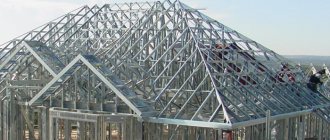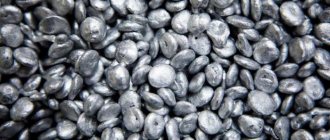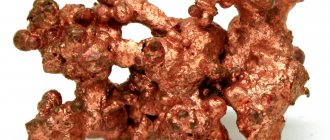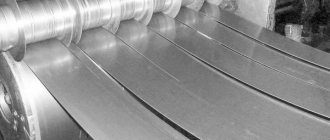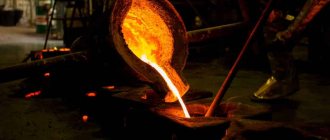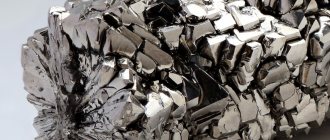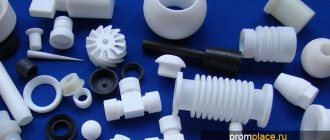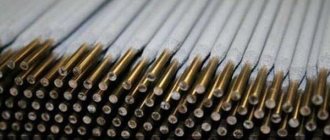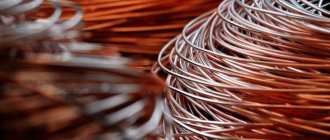Story
The discovery of titanium dioxide (TiO2) was made almost simultaneously and independently of each other by the Englishman W. Gregor and the German chemist M. G. Klaproth.
W. Gregor, studying the composition of magnetic ferruginous sand (Creed, Cornwall, England, 1791), isolated a new “earth” (oxide) of an unknown metal, which he called menaken. In 1795, the German chemist Klaproth discovered a new element in the mineral rutile and named it titanium. Two years later, Klaproth established that rutile and menaken earth were oxides of the same element, which gave rise to the name “titanium” proposed by Klaproth. Ten years later, the discovery of titanium took place for the third time: the French scientist L. Vauquelin discovered titanium in anatase and proved that rutile and anatase are identical titanium oxides. The first sample of titanium metal was obtained in 1825 by the Swede J. J. Berzelius. Due to the high chemical activity of titanium and the difficulty of its purification, a pure sample of Ti was obtained by the Dutch A. van Arkel and I. de Boer in 1925 by thermal decomposition of titanium iodide vapor TiI4.
Titanium did not find industrial use until the Luxembourger G. Kroll patented a simple magnesium-thermal method for the reduction of titanium metal from tetrachloride in 1940; This method, the Kroll process, remains one of the main ones in the industrial production of titanium to this day.
origin of name
The metal got its name in honor of the Titans, characters from ancient Greek mythology, the children of Gaia. The name of the element was given by Martin Klaproth in accordance with his views on chemical nomenclature, as opposed to the French school of chemistry, where they tried to name the element by its chemical properties. Since the German researcher himself noted the impossibility of determining the properties of a new element only from its oxide, he chose a name for it from mythology, by analogy with uranium he had previously discovered.
Being in nature
Titanium is in 10th place in terms of prevalence in nature. The content in the earth's crust is 0.57% by weight, in sea water - 0.001 mg/l. In ultramafic rocks 300 g/t, in basic rocks - 9 kg/t, in acidic rocks 2.3 kg/t, in clays and shales 4.5 kg/t. In the earth's crust, titanium is almost always tetravalent and is present only in oxygen compounds. Not found in free form. Under conditions of weathering and precipitation, titanium has a geochemical affinity with Al2O3. It is concentrated in bauxites of the weathering crust and in marine clayey sediments. Titanium is transferred in the form of mechanical fragments of minerals and in the form of colloids. Up to 30% TiO2 by weight accumulates in some clays. Titanium minerals are resistant to weathering and form large concentrations in placers. More than 100 minerals containing titanium are known. The most important of them are: rutile TiO2, ilmenite FeTiO3, titanomagnetite FeTiO3 + Fe3O4, perovskite CaTiO3, titanite (sphene) CaTiSiO5. There are primary titanium ores - ilmenite-titanomagnetite and placer ores - rutile-ilmenite-zircon.
STRUCTURE
Crystal crystal structure
Titanium has two allotropic modifications. The low-temperature modification, existing up to 882 °C, has a hexagonal close-packed lattice with periods a = 0.296 nm and c = 0.472 nm. The high-temperature modification has a body-centered cube lattice with a period a = 0.332 nm. The polymorphic transformation (882 °C) with slow cooling occurs according to the normal mechanism with the formation of equiaxed grains, and with rapid cooling - according to the martensitic mechanism with the formation of an acicular structure. Titanium has high corrosion and chemical resistance due to the protective oxide film on its surface. It does not corrode in fresh and sea water, mineral acids, aqua regia, etc.
Reserves and production
Main ores: ilmenite (FeTiO3), rutile (TiO2), titanite (CaTiSiO5).
As of 2002, 90% of mined titanium was used to produce titanium dioxide TiO2. World production of titanium dioxide was 4.5 million tons per year. Confirmed reserves of titanium dioxide (excluding Russia) are about 800 million tons. As of 2006, according to the US Geological Survey, in terms of titanium dioxide and excluding Russia, reserves of ilmenite ores amount to 603-673 million tons, and rutile ores - 49, 7-52.7 million tons. Thus, at the current rate of production, the world's proven reserves of titanium (excluding Russia) will last for more than 150 years.
Russia has the second largest reserves of titanium in the world, after China. The mineral resource base of titanium in Russia consists of 20 deposits (of which 11 are primary and 9 alluvial), fairly evenly distributed throughout the country. The largest of the explored deposits (Yaregskoye) is located 25 km from the city of Ukhta (Komi Republic). The deposit's reserves are estimated at 2 billion tons of ore with an average titanium dioxide content of about 10%.
The world's largest titanium producer is Russian.
Grades and alloys
The range of titanium alloys includes dozens of items.
The most popular is with aluminum and vanadium, 6% and 4%, respectively. Half of the extracted raw materials are spent on its production.
The second most popular is ferrotitanium (titanium-iron ratio - 1:3). In ferrous metallurgy, it is a means for cleaning steel from impurities.
The most commonly smelted grades of titanium are:
- VT1-0;
- VT1-00;
- VT1-00 St.
This is a technical material, without alloying additives. It contains a minimum of impurities: Ti content (%) – 99.24+.
Receipt
A block of crystalline titanium (purity 99.995%, weight ≈283 g, length ≈14 cm, diameter ≈25 mm), manufactured using the van Arkel and de Boer iodide method.
Typically, the starting material for the production of titanium and its compounds is titanium dioxide with a relatively small amount of impurities. In particular, it can be a rutile concentrate obtained from the enrichment of titanium ores. However, the reserves of rutile in the world are very limited, and the so-called synthetic rutile or titanium slag, obtained from the processing of ilmenite concentrates, is more often used. To obtain titanium slag, ilmenite concentrate is reduced in an electric arc furnace, while iron is separated into the metal phase (cast iron), and unreduced titanium oxides and impurities form the slag phase. Rich slag is processed using the chloride or sulfuric acid method.
Titanium ore concentrate is subjected to sulfuric acid or pyrometallurgical processing. The product of sulfuric acid treatment is titanium dioxide powder TiO2. Using the pyrometallurgical method, the ore is sintered with coke and treated with chlorine, producing titanium tetrachloride vapor TiCl4:
TiO2 + 2C + 2Cl2 → TiCl4 + 2CO
The resulting TiCl4 vapors are reduced with magnesium at 850 °C:
TiCl4 + 2Mg → 2MgCl2 + Ti
In addition, the so-called FFC Cambridge process, named after its developers Derek Fray, Tom Farthing and George Chen from the University of Cambridge, where it was created, is now beginning to gain popularity. This electrochemical process allows for the direct, continuous reduction of titanium from its oxide in a molten mixture of calcium chloride and quicklime (calcium oxide). This process uses an electrolytic bath filled with a mixture of calcium chloride and lime, with a graphite sacrificial (or neutral) anode and a cathode made of a reducible oxide. When current is passed through the bath, the temperature quickly reaches ~1000–1100 °C, and the calcium oxide melt decomposes at the anode into oxygen and metallic calcium:
2CaO → 2Ca + O2
The resulting oxygen oxidizes the anode (in the case of using graphite), and calcium migrates in the melt to the cathode, where it reduces titanium from its oxide:
O2 + C → CO2 TiO2 + 2Ca → Ti + 2CaO
The resulting calcium oxide again dissociates into oxygen and metallic calcium, and the process is repeated until the cathode is completely converted into a titanium sponge or the calcium oxide is exhausted. In this process, calcium chloride is used as an electrolyte to impart electrical conductivity to the melt and mobility of active calcium and oxygen ions. When using an inert anode (for example, tin dioxide), instead of carbon dioxide, molecular oxygen is released at the anode, which pollutes the environment less, but the process in this case becomes less stable, and, in addition, in some conditions, the decomposition of chloride becomes more energetically favorable, rather than calcium oxide, which leads to the release of molecular chlorine.
The resulting titanium “sponge” is melted down and cleaned. Titanium is refined using the iodide method or electrolysis, separating Ti from TiCl4. To obtain titanium ingots, arc, electron beam or plasma processing is used.
Physical properties
Titanium is a lightweight silvery-white metal. At normal pressure, it exists in two crystalline modifications: low-temperature α-Ti with a hexagonal close-packed lattice (hexagonal system, space group C
6
mmc
, cell parameters
a
= 0.2953 nm,
c
= 0.4729 nm,
Z
= 2) and high-temperature β-Ti with cubic body-centered packing (cubic system, space group
Im
3
m
, cell parameters
a
= 0, 3269 nm,
Z
= 2), transition temperature α↔β 883 °C, transition heat ΔH
=
3.8 kJ/mol (87.4 kJ/kg). Most metals, when dissolved in titanium, stabilize the β-phase and reduce the temperature of the α↔β transition. At pressures above 9 GPa and temperatures above 900 °C, titanium transforms into the hexagonal phase (ω-Ti). The densities of α-Ti and β-Ti are respectively 4.505 g/cm³ (at 20 °C) and 4.32 g/cm³ (at 900 °C). The atomic density of α-titanium is 5.67⋅1022 at/cm³.
The melting point of titanium at normal pressure is 1670 ± 2 °C, or 1943 ± 2 K (adopted as one of the secondary calibration points of the ITS-90 temperature scale. Boiling point 3287 °C. At a sufficiently low temperature (-80 °C), titanium becomes quite brittle.Molar heat capacity at normal conditions Cp
= 25.060 kJ/(mol·K), which corresponds to a specific heat capacity of 0.523 kJ/(kg·K).
Heat of fusion 15 kJ/mol, heat of evaporation 410 kJ/mol. Characteristic Debye temperature 430 K. Thermal conductivity 21.9 W/(m K) at 20 °C. The temperature coefficient of linear expansion is 9.2·10−6 K−1 in the range from −120 to +860 °C. Molar entropy of α-titanium S
0 = 30.7 kJ/(mol K).
For titanium in the gas phase, enthalpy of formation Δ H
0 f = 473.0 kJ/mol, Gibbs energy Δ
G
0 f = 428.4 kJ/mol, molar entropy
S
0 = 180.3 kJ/(mol K), heat capacity at constant pressure
Cp
= 24.4 kJ/(mol K)
The electrical resistivity at 20 °C is 0.58 μOhm m (according to other data 0.42 μOhm m), at 800 °C 1.80 μOhm m. Temperature coefficient of resistance 0.003 K−1 in the range 0…20 °C.
Plastic, weldable in an inert atmosphere. Strength characteristics are little dependent on temperature, but are highly dependent on purity and pre-treatment. For technical titanium, the Vickers hardness is 790–800 MPa, the normal elastic modulus is 103 GPa, and the shear modulus is 39.2 GPa. High-purity titanium, pre-annealed in vacuum, has a yield strength of 140–170 MPa, relative elongation of 55–70%, and Brinell hardness of 716 MPa.
It has a high viscosity and, during machining, is prone to sticking to the cutting tool, and therefore requires the application of special coatings to the tool and various lubricants.
At normal temperatures it is covered with a protective passivating film of TiO2 oxide, making it corrosion resistant in most environments (except alkaline).
The transition temperature to the superconducting state is 0.387 K. At temperatures above 73 Kelvin, titanium is paramagnetic. Magnetic susceptibility at 20 °C is 3.2·10−6. The Hall constant of α-titanium is +1.82·10−13.
Isotopes
Main article: Isotopes of titanium
Known isotopes of titanium with mass numbers from 38 to 63 (number of protons 22, neutrons from 16 to 41), and 2 nuclear isomers.
Natural titanium consists of a mixture of five stable isotopes: 46Ti (isotopic abundance 7.95%), 47Ti (7.75%), 48Ti (73.45%), 49Ti (5.51%), 50Ti (5.34%) .
Among the artificial isotopes, the longest-lived are 44Ti (half-life 60 years) and 45Ti (half-life 184 minutes).
The use of titanium for the manufacture of sports equipment
The reason for the popularity of titanium in sports equipment is simple - it allows you to achieve a weight-to-strength ratio superior to any other metal. The use of titanium in bicycles began approximately 25-30 years ago and was the first use of titanium in sports equipment. Mostly pipes are used, including those supplied by Variant LLC, made of Gr.9 Ti3Al-2.5V alloy (ASTM B338 Grade 9). Other parts made from titanium alloys include brakes, sprockets and seat springs. The use of titanium in the production of golf clubs first began in the late 80s and very early 90s by club manufacturers in Japan. Until 1994-1995, this application of titanium was virtually unknown in the United States and Europe. That changed when Callaway introduced its Ruger Titanium made titanium putter called the Great Big Bertha. Due to the obvious benefits and with the help of Callaway's well-thought-out marketing, titanium clubs instantly gained enormous popularity. In a short period of time, titanium clubs have gone from being the exclusive and expensive equipment of a small group of golfers to being widely used by the majority of golfers (while still being more expensive than steel clubs).
Titanium is used in the manufacture of bicycle frames. In the United States, the three most commonly used grades of 3-2.5 titanium in the bicycle industry are: - AMS grade 105, the same substance that is designated 747. This material meets all the requirements of the AMS (Aerospace Materials Specification) standard for hydraulic tubing. In theory, purchasing AMS 105 pipes directly from the manufacturer gives you an unlimited choice of pipe diameters and wall thicknesses. In fact, there are many restrictions on the minimum order quantity and due to this, many bicycle frame manufacturers prefer to order titanium tubes from. Customers sometimes add or change standard AMS pipe specifications. Merlin MTS325 pipes differ from AMS pipes in that they have stricter tolerances for surface structure. Merlin pipes also outperform AMS pipes in terms of minimum tensile strength and yield strength. — “Sports grade” Grade 9. Pipes made of titanium Gr.9 sports grade are cheaper, since they undergo fewer processing steps, which reduces the price. However, reducing the price has a negative impact on the pipe molding and surface structure, both inside and outside.
Pipes for racing bicycles and other parts are made from ASTM B338 Grade 9 (Ti3Al-2.5V) alloy supplied by Variant LLC. Surprisingly, a significant amount of titanium sheet is used in the production of diving knives. Most manufacturers use VT6 titanium sheets (Ti6Al-4V or Grade 5 or Gr.5 alloy), but this alloy does not provide blade edge durability like other stronger alloys. Some manufacturers are switching to using VT23 alloy. Cast titanium horseshoes provide a significant reduction in weight compared to steel, while still providing the necessary strength. Unfortunately, this use of titanium did not come to fruition because titanium horseshoes sparked and spooked horses. Few will agree to use titanium horseshoes after the first unsuccessful experiences. The Titanium Beach company, located in Newport Beach, California, has developed skate blades made from Ti6Al-4V Gr.5 alloy (Grade 5 or VT6). Unfortunately, the durability of the blade edges is again an issue here. We think this product has a chance of life if manufacturers use stronger alloys such as 15-3-3-3 or VT-23. Titanium is very widely used in mountaineering and tourism, for almost all items that climbers and tourists carry in their backpacks: bottles, cups, cooking sets, tableware, mainly made from commercially pure titanium - sheets, rods and pipes VT1- 00 (Grade 1) and VT1-0 (Grade 2). Other examples of mountaineering and hiking equipment are compact stoves, tent poles and mounts, ice axes and ice screws. Gun manufacturers have recently begun producing titanium pistols for both sport shooting and law enforcement use.
Chemical properties
It is resistant to corrosion due to its oxide film, but when crushed into powder, as well as in thin shavings or wire, titanium is pyrophoric. Titanium dust tends to explode. Flash point: 400°C. Titanium shavings are fire hazardous.
Titanium is resistant to dilute solutions of many acids and alkalis (except HF, H3PO4 and concentrated H2SO4). Titanium is resistant to wet chlorine and aqueous chlorine solutions.
It easily reacts even with weak acids in the presence of complexing agents, for example, it interacts with hydrofluoric acid HF due to the formation of the complex anion [TiF6]2−. Titanium is most susceptible to corrosion in organic environments, since in the presence of water a dense passive film of titanium oxides and hydride is formed on the surface of a titanium product. The most noticeable increase in the corrosion resistance of titanium is noticeable when the water content in an aggressive environment increases from 0.5 to 8.0%, which is confirmed by electrochemical studies of the electrode potentials of titanium in solutions of acids and alkalis in mixed aqueous-organic media.
When heated in air to 1200 °C, Ti lights up with a bright white flame with the formation of oxide phases of variable composition TiOx. The hydroxide TiO(OH)2 xH2O is precipitated from solutions of titanium salts, and by careful calcination the oxide TiO2 is obtained. Hydroxide TiO(OH)2 xH2O and dioxide TiO2 are amphoteric.
TiO2 reacts with sulfuric acid during prolonged boiling. When fused with soda Na2CO3 or potash K2CO3, TiO2 oxide forms titanates:
TiO2 + K2CO3 → K2TiO3 + CO2
When heated, Ti interacts with halogens (for example, with chlorine at 550 °C). Titanium tetrachloride TiCl4 under normal conditions is a colorless liquid that fumes strongly in air, which is explained by the hydrolysis of TiCl4, water vapor contained in the air and the formation of tiny droplets of HCl and a suspension of titanium hydroxide.
By reducing TiCl4 with hydrogen, aluminum, silicon, and other strong reducing agents, titanium trichloride and dichloride TiCl3 and TiCl2 are obtained - solid substances with strong reducing properties. Ti interacts with Br2 and I2.
With nitrogen N2 above 400 °C, titanium forms nitride TiNx (x = 0.58–1.00). Titanium is the only element that burns in a nitrogen atmosphere.
When titanium interacts with carbon, titanium carbide TiCx (x = 0.49–1.00) is formed.
When heated, Ti absorbs H2 to form a compound of variable composition TiHx (x = 2.00–2.98). When heated, these hydrides decompose, releasing H2.
Titanium forms alloys and intermetallic compounds with many metals.
Physico-chemical characteristics
The properties of the metal are well studied:
- Reacts easily with acids even at low concentrations.
- This is a refractory metal: the melting point is 1670°C. It takes twice as much to boil.
- It is plastic and becomes brittle in the cold (-80°C).
- Strength is affected by the degree of purification, but not by temperature.
- At room temperature it is covered with an oxide film, which makes it resistant to corrosion (excluding alkalis).
- At normal pressure, there are two types of titanium with different types of lattices: high- and low-temperature.
Lightness, almost weightlessness, is the main property by which titanium can be easily distinguished from other metals.
| Properties of the atom | |
| Name, symbol, number | Titanium (Ti), 22 |
| Atomic mass (molar mass) | 47.867(1) a. e.m. (g/mol) |
| Electronic configuration | [Ar] 3d2 4s2 |
| Atomic radius | 147 pm |
| Chemical properties | |
| Covalent radius | 132 pm |
| Ion radius | (+4e)68 (+2e)94 pm |
| Electronegativity | 1.54 (Pauling scale) |
| Electrode potential | −1,63 |
| Oxidation states | 2, 3, 4 |
| Ionization energy (first electron) | 657.8 (6.8281) kJ/mol (eV) |
| Thermodynamic properties of a simple substance | |
| Density (at normal conditions) | 4.54 g/cm³ |
| Melting temperature | 1670 °C 1943 K |
| Boiling temperature | 3560 K |
| Ud. heat of fusion | 18.8 kJ/mol |
| Ud. heat of vaporization | 422.6 kJ/mol |
| Molar heat capacity | 25.1 J/(K mol) |
| Molar volume | 10.6 cm³/mol |
| Crystal lattice of a simple substance | |
| Lattice structure | hexagonal close-packed (α-Ti) |
| Lattice parameters | a=2.951 s=4.697 (α-Ti) |
| c/a ratio | 1,587 |
| Debye temperature | 380 K |
| Other characteristics | |
| Thermal conductivity | (300 K) 21.9 W/(m K) |
| CAS number | 7440-32-6 |
Due to the increased viscosity, mechanical processing of the metal is difficult. This drawback is eliminated by lubricating the tool with special compounds.
Application
In pure form and in the form of alloys
Titanium Alloy Watch
Blank of a titanium frame for an F-15 fighter before and after pressing on an Alcoa 45 thousand ton stamping press, May 1985
The use of titanium metal in many industries is due to the fact that its strength is approximately equal to the strength of steel, although it is 45% lighter . Titanium is 60% heavier than aluminum, but is about twice as strong.
- Titanium in the form of alloys is the most important structural material in aircraft, rocket and shipbuilding.
- The metal is used in the chemical industry (reactors, pipelines, pumps, pipeline fittings), military industry (body armor, aviation armor and fire barriers, submarine hulls), industrial processes (desalination plants, pulp and paper processes), automotive industry, agricultural industry , food industry, sporting goods, jewelry, mobile phones, light alloys, etc.
- Titanium is physiologically inert, which is why it is used in medicine (prostheses, osteoprostheses, dental implants), in dental and endodontic instruments, and piercing jewelry.
- Titanium casting is performed in vacuum furnaces into graphite molds. Vacuum lost wax casting is also used. Due to technological difficulties, it is used in artistic casting to a limited extent. The first monumental cast titanium sculpture in the world is the monument to Yuri Gagarin on the square named after him in Moscow.
- Titanium is an alloying additive in many alloy steels and most special alloys.
- Nitinol (nickel-titanium) is a shape memory alloy used in medicine and technology.
- Titanium aluminides are very resistant to oxidation and heat-resistant, which, in turn, determined their use in aviation and automotive manufacturing as structural materials.
- Titanium is one of the most common getter materials used in high-vacuum pumps.
There are many titanium alloys with different metals. Alloying elements are divided into three groups, depending on their effect on the temperature of the polymorphic transformation: beta stabilizers, alpha stabilizers and neutral strengtheners. The first ones lower the transformation temperature, the second ones increase it, the third ones do not affect it, but lead to solution strengthening of the matrix. Examples of alpha stabilizers: aluminum, oxygen, carbon, nitrogen. Beta stabilizers: molybdenum, vanadium, iron, chromium, nickel. Neutral hardeners: zirconium, tin, silicon. Beta stabilizers, in turn, are divided into beta isomorphic and beta eutectoid-forming.
The most common titanium alloy is the Ti-6Al-4V alloy (VT6 in the Russian classification), containing about 6% aluminum and about 4% vanadium. Based on the ratio of crystalline phases, it is classified as an (α+β) alloy. Up to 50% of mined titanium is used for its production.
Ferrotitanium (an alloy of titanium with iron containing 18-25% titanium) is used in ferrous metallurgy to deoxidize steel and remove unwanted impurities dissolved in it (sulfur, nitrogen, oxygen).
In the 1980s, about 60-65% of titanium mined in the world was used in the construction of aircraft and rockets, 15% in chemical engineering, 10% in energy, 8% in shipbuilding and for water desalination plants.
In the form of connections
- White titanium dioxide (TiO2) is used in paints (such as titanium white) and in the production of paper and plastics. Food additive E171.
- Organo-titanium compounds (for example, tetrabutoxytitanium) are used as a catalyst and hardener in the chemical and paint and varnish industries.
- Inorganic titanium compounds are used in the chemical electronics and fiberglass industries as additives or coatings.
- Titanium carbide, titanium diboride, and titanium carbonitride are important components of superhard materials for metal processing.
- Titanium nitride is used to coat instruments, church domes and in the production of costume jewelry, as it has a color similar to gold.
- Barium titanate BaTiO3, lead titanate PbTiO3 and a number of other titanates are ferroelectrics.
- Titanium tetrachloride is used to iridize glass and to create smoke screens.
Analysis of consumption markets
In 2005, Titanium Corporation
published the following estimate of titanium consumption in the world:
- 60% - paint;
- 20% - plastic;
- 13% - paper;
- 7% - mechanical engineering.
Application of titanium in transport
Many of the benefits of using titanium in armored vehicles also apply to vehicles.
Replacing structural materials currently consumed by transport engineering enterprises with titanium from Variant LLC should lead to a reduction in fuel consumption, an increase in useful load capacity, an increase in the fatigue limit of parts of crank mechanisms, etc. On railways, it is extremely important to reduce dead load. A significant reduction in the total weight of the rolling stock due to the use of titanium sheets and VT1-0 rods will allow saving in traction, reducing the dimensions of journals and axle boxes. Weight is also important for towed vehicles. Here, replacing steel with titanium forgings in the production of axles and wheels would also increase payload capacity.
The current demand for titanium sheets, titanium rods and pipes of the VT6, VT1-0 grades in this market segment is at the level of 500 tons with the massive use of this material in the structures of valves, springs, exhaust systems, transmission shafts, bolts, and can potentially rise to a level of almost not 16,000 tons per year! Limiting factors that prevent the use of titanium from expanding significantly (in the automotive industry) are the unpredictability of demand and uncertainty in the supply of raw materials. At the same time, in the automotive industry there remains a large potential “niche” for titanium, which combines optimal weight and strength characteristics for coil springs and exhaust gas exhaust systems.
A significant reduction in fuel consumption, a reduction in the volume of exhaust gases to a “zero emission” level, as well as an increase in the use of industrial waste and scrap through their remelting are the main requirements for automakers. Titanium and titanium-containing alloys, which have a number of advantages over other materials, can help solve various problems, in particular the problem of environmental protection.
When developing new designs of parts, the priority task is to reduce the mass of parts, which to a greater or lesser extent affects the movement of the car itself. Cyclically moving parts and assemblies have great potential for reducing fuel consumption, primarily by reducing their mass. The reliability of grade 9 and VT6 titanium parts has been tested for several years on racing cars and during widespread use in the aerospace industry.
In addition to reducing the weight of parts, the use of titanium alloys helps solve the problem of reducing the amount of exhaust gases. The capabilities of this material and its scope of application extend from exhaust filters, turbo and catalytic converters to enhance the combustion process, to devices for the complete elimination of exhaust gases using hydrogen storage devices made of titanium.
